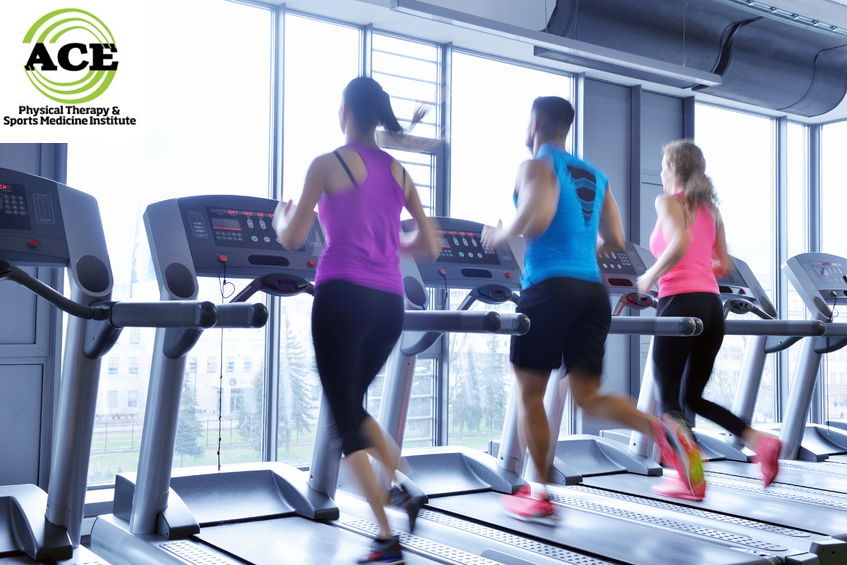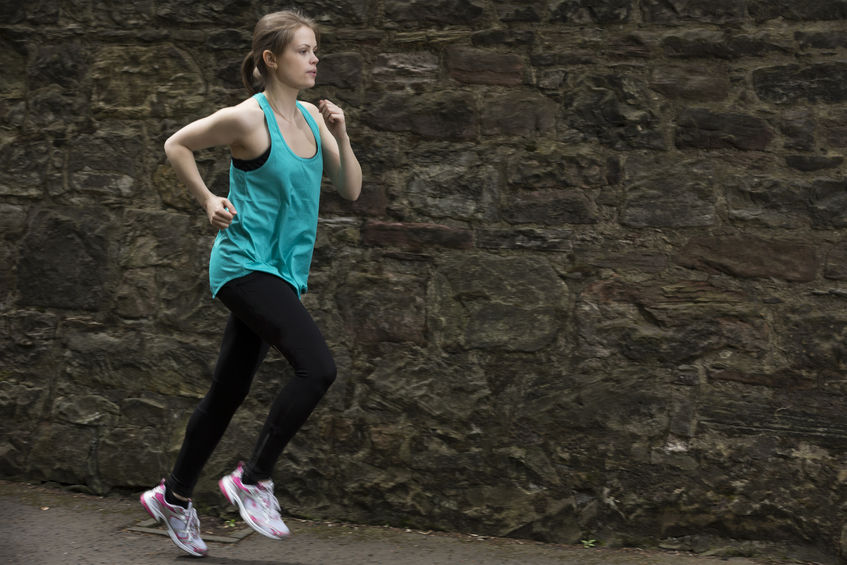REDUCING ANTERIOR KNEE PAIN
Changing running style to reduce anterior knee pain
by ACE Physical Therapy and Sports Medicine Institute
Tid Bits of Info.
- Greater than 30 million people run on a regular basis.
- Forefoot striking reduces and delays the peak impact force during a run.
- Running in soft insoles can lessen the muscle contraction force of the lower extremity.
- Running on hard surfaces and striking with the forefoot can increase the muscle action in the lower extremities.
- Seek the advice and treatment of a Physical Therapist if you want to change your running.
Over 30 million Americans are running for their lives. Running reduces stress, provides a robust workout, and offers a host of medical benefits. Running can also cause anterior knee pain. Physical Therapists frequently treat patella femoral joint pain in the outpatient orthopaedic setting. While there are multiple treatments, modified running style has become popular among some therapists. They modify the patient’s running style to reduce the forces that are present when running. By changing some basic aspects of running style, the compressive force is reduced significantly and in many instances the pain level is reduced to a tolerable level.
Anterior Knee Pain Treatment
Treating patella femoral joint pain usually involves some form of decreased activity while increasing strength and flexibility in the lower extremities. The patella glides up and down in a groove (trochlear groove), which is located on the distal aspect of the femur (leg bone). The muscles of the lower extremity control the patella. Physical therapists are well trained at prescribing an exercise program that will increase the neuromuscular control, muscle strength and muscular endurance of all of the muscles in the lower extremity. The approach to controlling the patella is multi-factorial and takes time to establish.
Modifying Running Style
Physical Therapists have found that modifying a runner’s style can be a good way to speed up the process. Your Physical Therapist can help you with the change in your running style if you desire to try a new running style. The therapist will address stride length, foot strike and speed.
Stride Length
The runner’s stride length can have a positive or negative effect on the amount of pressure that is present in the patella femoral joint. The shortened stride length tends to have a positive effect on the pressure. At first, runners may experience added fatigue while adjusting to the increased step rate to maintain a constant speed but the body usually quickly adapts. The shortened stride length will reduce the amount of internal rotation and adduction of the hips. This makes it more advantageous for the patella to remain aligned in the groove, reducing the possibility of abnormal tracking that can lead to anterior knee pain.
Foot Strike
Anterior knee pain can be a direct result of increased compressive force in the patella femoral joint. Changing foot strike position could help decrease that compressive force and reduce pain. Running uses three basic strike patterns: heel strike, mid-foot strike, and forefoot strike. Typically, runners will use the same pattern throughout a long distance run. While studies are inconclusive, they indicate that striking with the mid or forefoot might reduce the frequency of lower extremity injuries.
One important difference in heel strike and mid or forefoot striking is the anatomical position of the foot and ankle upon impact. Heel strikers have their foot and ankle in a dorsiflexed position, putting the ankle plantar flexing musculature at a huge disadvantage. The muscles cannot contract forcefully in their lengthened state. These muscles are not in a good position or length to help stabilize the runner’s body weight. The quadriceps muscle group must contract with greater force to stabilize the lower extremity. The quadriceps use the patella as a fulcrum or pulley to generate force, therefore, any increased quadriceps contraction force can lead to more compressive force in the patella femoral joint.
When a runner strikes with their rear foot first, the impact force rises immediately and during mid and forefoot striking the impact force rises gradually. The gradual rise in force is in millisecond, but it might be enough time to allow the lower extremity musculature to contract and add dynamic support to the lower extremity joints.
Speed
Speed can be another source of increased compression force. Running at a fast pace forces the runner to increase stride length, rate, or both. The increased speed tends to increase the compressive force in the patella femoral joint due to the increased quadriceps contraction force required to propel the body forward at a faster pace. The distance traveled with each stride is greater; therefore the time to run the same distance is reduced. There is a less cumulative force in the patella femoral joint due to the shortened time. The increased speed usually requires the runner to strike with the mid or forefoot, and this enhances the contraction of the plantar flexing muscles and their ability to stabilize the lower extremity. In turn, this can help to reduce the pressure in the patella femoral joint by reducing the demand on the quadriceps to stabilize the lower extremity.
The therapist can help you with form, training tips and injury prevention ideas. In the event that you do get injured, the Physical Therapist is one of the most knowledgeable healthcare professionals in treating running related injuries. They will help you resolve the symptoms and correct the problem. Retraining might include videotaping your running style and modifying it in hopes of preventing future injuries.
Visiting a Physical Therapist does not require you to see your doctor first. The Physical Therapists can evaluate and treat you without a doctor’s prescription. Your insurance might require that you have a referral but are not required to have a doctor’s prescription in any state.
Running is a recreational activity or cardiovascular workout for millions of people. Unfortunately, many of those runners suffer from anterior knee pain or patella femoral joint pain. The causes and treatments for this condition are vast, but an adjustment to stride length, striking pattern and running speed might be able to reduce the severity of one’s symptoms.
Read more articles on our main website blog at: ACE-pt.org/blog
Vist our main website at www.ACE-pt.org


